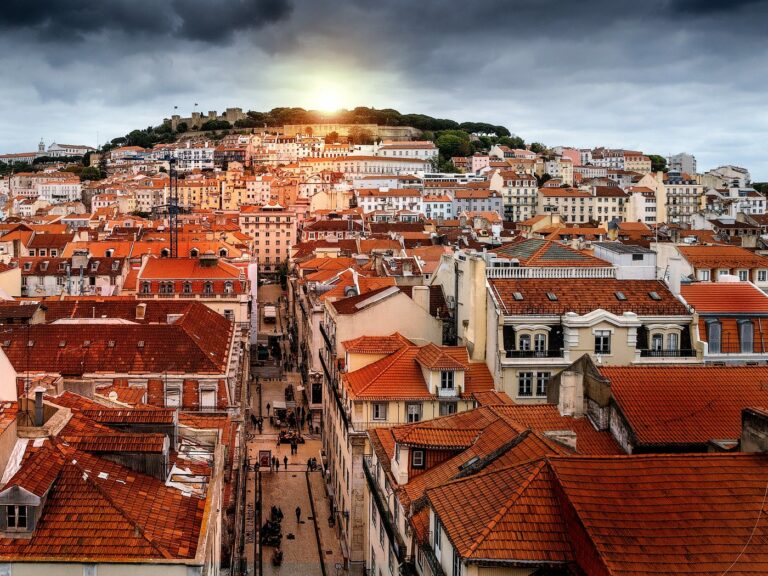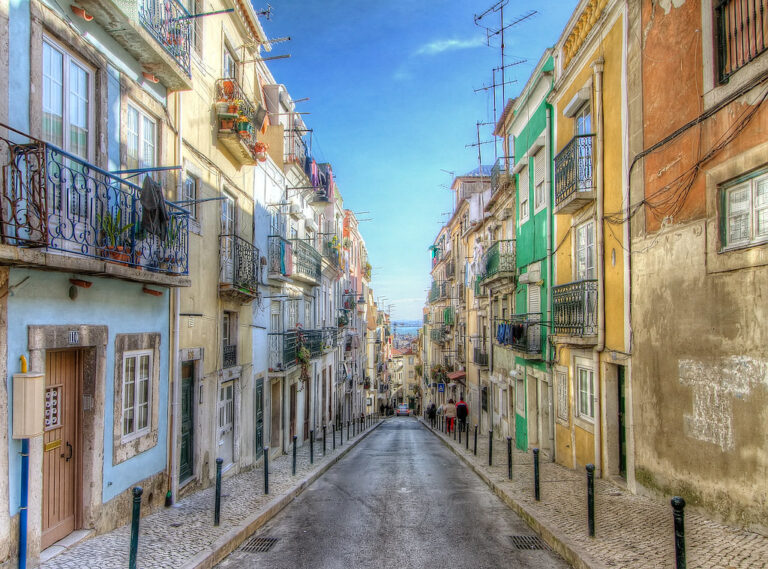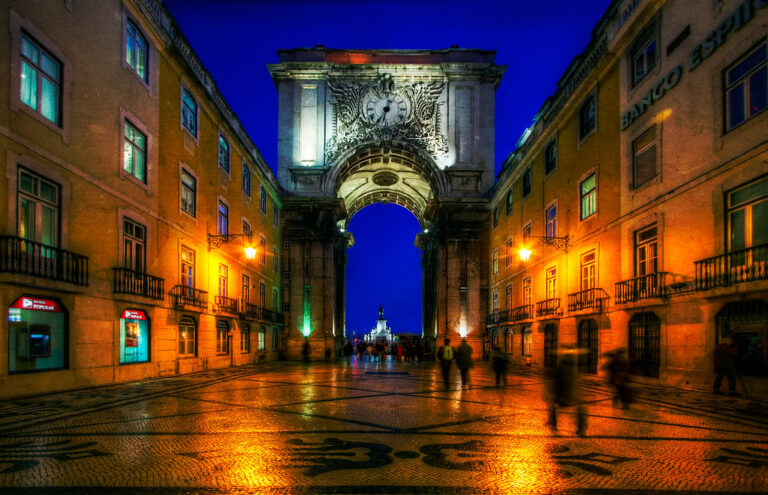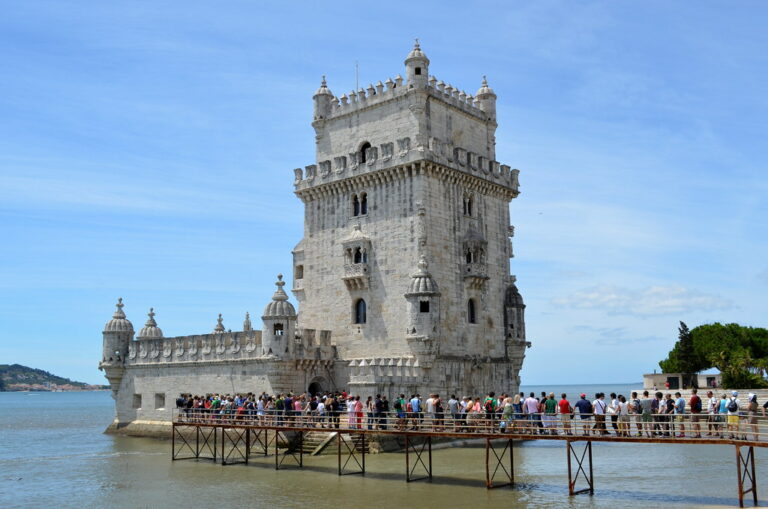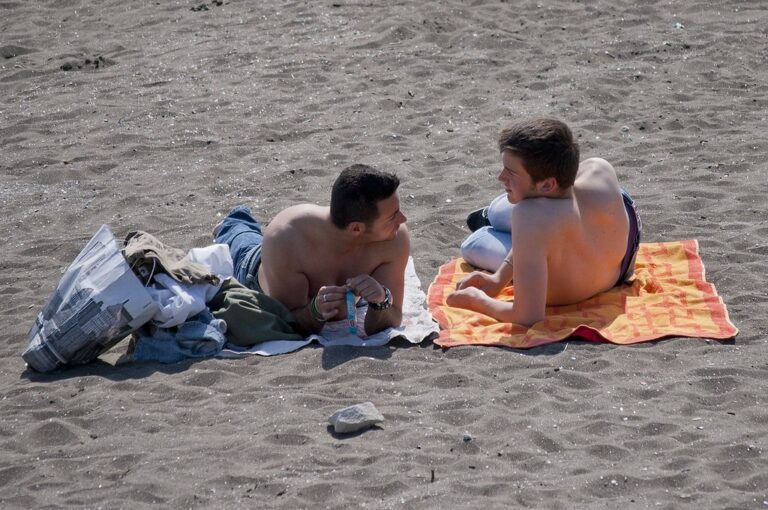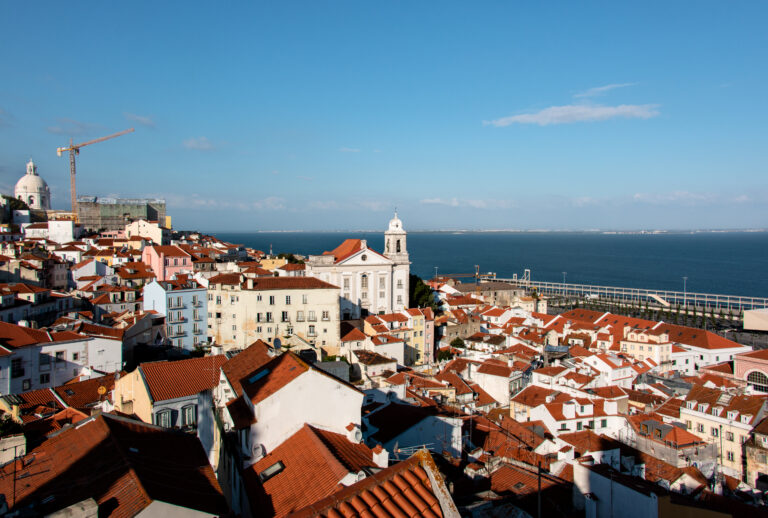While I was living in Alfama, São Jorge Castle must have been the biggest attraction. Perched atop the highest hill, it seemed to watch over the historic district, its centuries-old walls echoing tales of Lisbon’s past.
Exploring this iconic Castle became one of the biggest attractions, and amidst the narrow cobblestone streets, it stood as a timeless sentinel.
In my guide, we’ll delve into the magic of Castelo de São Jorge, offering insights into its rich history, providing tips on reaching this historical gem, and unraveling the experience that makes it an unmissable destination in Lisbon.
Castelo de São Jorge Portuguese History

Perched atop Lisbon’s highest peak, the São Jorge Castle stands majestically, a timeless symbol of the city’s rich history.
Offering panoramic views by day and an illuminated spectacle at night, it dominates the summit of São Jorge hill, nestled between the neighborhoods of Alfama and Castelo.
Originating from a small Visigothic fortress in the fifth century, the Castle was transformed by the Moors and later became a Royal Palace under Afonso I of Portugal.
Its splendor peaked in the thirteenth century, witnessing occupancy by both kings and bishops. Recently, archaeological discoveries of Phoenician, Greek, and Carthaginian ruins have added layers to this historical gem.
The Easy Lisbon Quiz
Ready to test your Lisbon knowledge?
I’ve made an easy Lisbon quiz with 5 questions. Let’s see if you can get them right. 🤞
Visiting Castelo de São Jorge
Embarking on a journey to São Jorge Castle promises a captivating morning filled with exploration, as the expansive site offers more than just the iconic castle walls with its eleven towers.
While the Castle holds a wealth of history and charm, you’ll discover additional delights, such as a quaint museum, a welcoming bar, and a restaurant that beckons for a leisurely lunch, allowing you to savor the moment before delving further into Lisbon’s treasures.
After your castle adventure, I encourage you to meander through the neighboring streets, each holding its own story. São Jorge Hill, besides being home to the Castle, also boasts the Lisbon Cathedral, a mere stroll away, inviting you to continue your discovery of the city’s historical wonders.
Hot Tip🔥: I recommend you check the incredible views of Lisbon’s east side when you top the medieval Castle.
Castelo de São Jorge Visit Guide
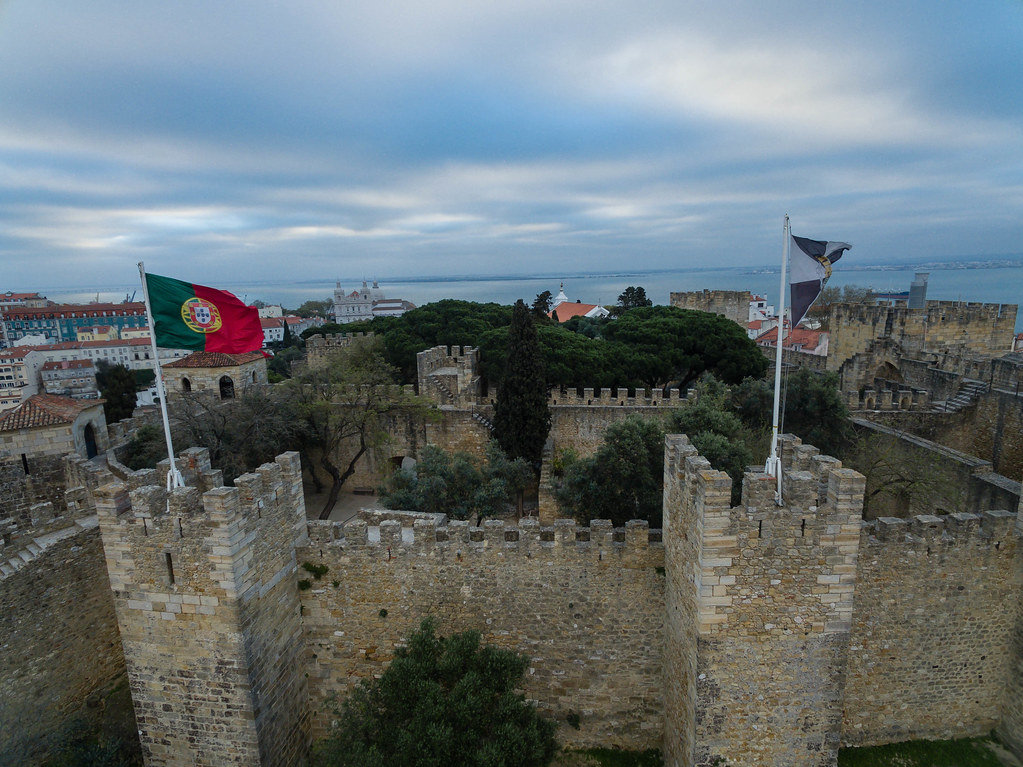
Situated majestically at the summit of São Jorge Hill, Castelo de São Jorge overlooks Lisbon, offering a breathtaking panorama of the city below. It is one of many popular landmarks in Lisbon.
Planning On Going To Lisbon?
I’ve created a trip planner where you enter the number of days you’re going and what activities you want to do.
Based on your input, you then get an entire vacation planned with ideas.

Schedule
- November – February: 9 am to 6 pm.
- March – October: 9 am to 9 pm.
Hot Tip🔥: The best time to visit the castle is in January when things are quiet.
Admission Prices
- Adult: €10 (US$ 10.80)
- Student: €5 (US$ 5.40)
- Over 65s and Disabled Guests: €8.50 (US$ 9.20)
- Children (Under 12): Free entrance.
What is Included With Your Ticket:
Your ticket to Castelo de São Jorge not only grants you full access to the national monument and its gardens without time constraints but also offers enriching experiences:
- Guided Tours: Enjoy complimentary 15-minute guided tours of the Archaeological Site and the Camera Obscura. These tours, available in Portuguese, English, and Spanish, provide insights into Lisbon’s historical layers.
- Museum Access: Explore the museum, featuring objects from the alcáçova area, covering cultures and lifestyles from the 7th century B.C. to the 18th century. Particular emphasis is given to the Moorish period from the 11th to 12th centuries.
- Archaeological Centre: Delve into the Castle’s walls to discover ruins reflecting three significant periods in Lisbon’s history – from the 7th century B.C. settlements to the Moorish residential area from the 11th century and the Palace of Condes de Santiago remains from the 18th century.
- Camera Obscura Experience: Immerse yourself in a real-time, 360º detailed view of Lisbon. Housed in the iconic Ulysses Tower, the Camera Obscura showcases the city’s monuments, emblematic areas, the river, and the vibrant pulse of Lisbon.
Transportation
- Tram: Miradouro Santa Luzia, Line 28, plus 5 minutes on foot.
- Bus: Castelo, Line 737, plus 2 minutes on foot.
Nearby Places
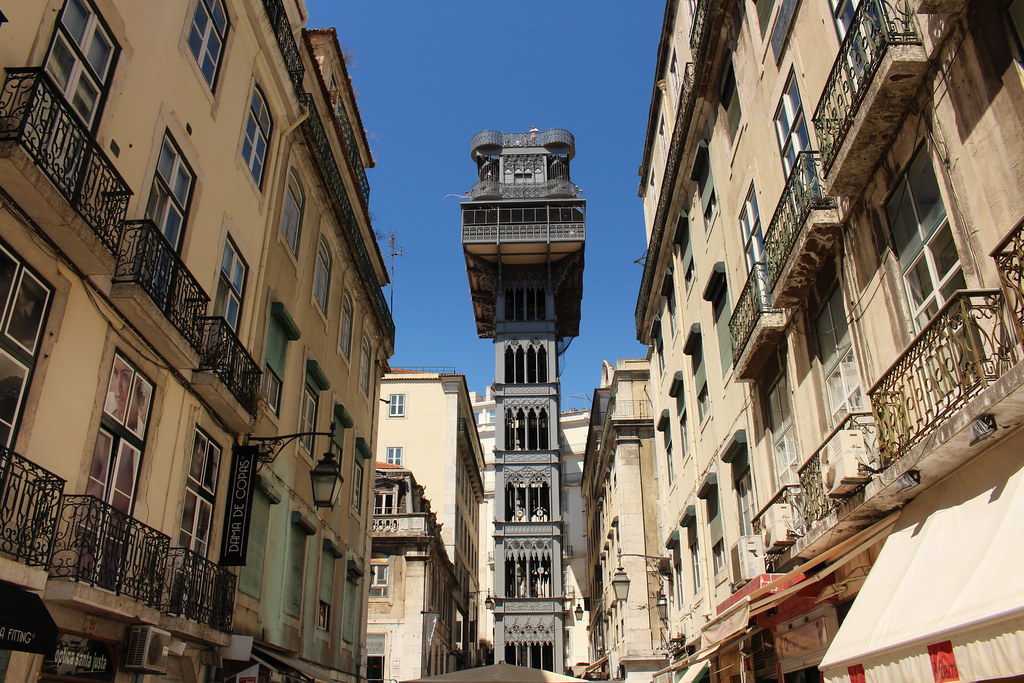
- Alfama (380 m): Immerse yourself in Lisbon’s oldest district’s charming alleys and Fado music.
- Lisbon Cathedral (428 m): Explore the historic cathedral with its Romanesque architecture.
- Baixa (480 m): Discover downtown Lisbon’s elegant squares and neoclassical buildings.
- Rossio Square in Lisbon (502 m): Experience the city’s vibrant heart with shops, cafes, and theaters.
- Santa Justa Lift in Lisbon (529 m): This iconic iron elevator offers panoramic views, elevating your experience.
Here are the best things to do in Lisbon In June 2024
I’ll send you a list of the best things to do in May and every month moving forward from today.
It’ll be based on my personal experience of living and traveling around Lisbon. A lot of hidden gems.
Castle Complex History
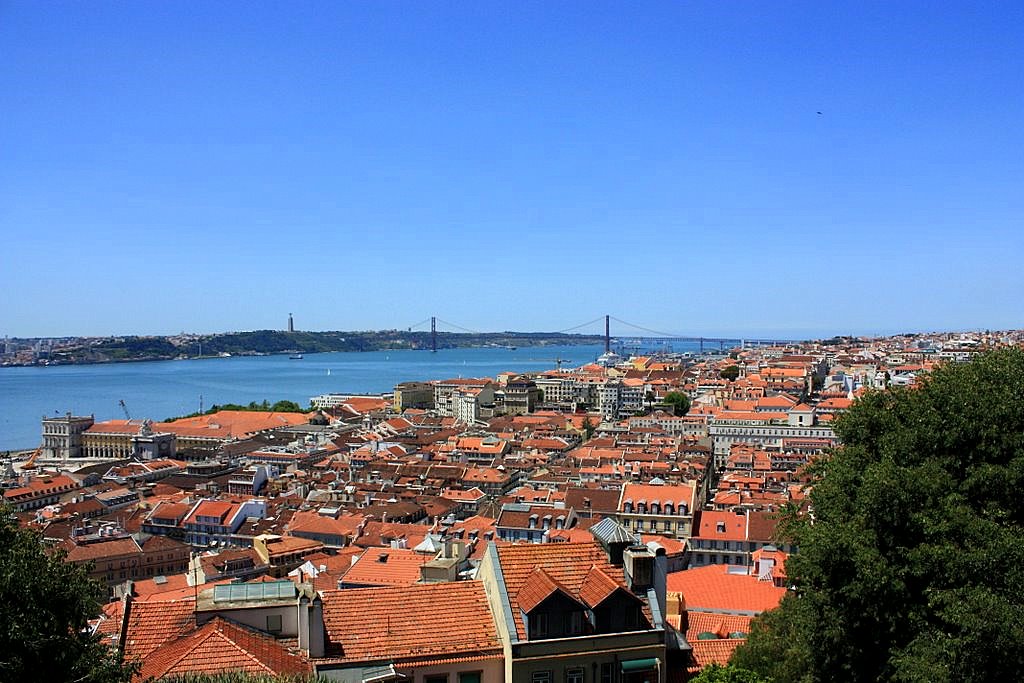
Perched atop a hill, Castelo de São Jorge forms an integral part of Lisbon’s historic defensive system, evolving through centuries of transformation.
While archaeological findings shed light on the Iron Age and Roman period, the medieval Castle we see today emerged after the reconquest of Lisbon.
The current Gothic-influenced structure, fortified with 11 towers and two places-of-arms, took shape under Kings Afonso III and Denis. Notable features include wide wall-walks, a vanished keep, a strategic barbican, a moat, Albarrana towers, and the iconic Torre de São Lourenço.
Later modifications in 1373, known as the Fernandine Wall, extended defenses to safeguard an expanding Lisbon. The entrance to the castle is a walk over a stone bridge.
Hot Tip🔥: While Castle Sao de Jorge is a main attraction in Lisbon, you can also explore some other castles.
Main Tourist Attractions of The Castle Sao de Jorge
When exploring the iconic landmark and its spectacular views, the castle walls are not the only main attraction, as there is much more:
The Gateways
The gateways are crucial in Castelo de São Jorge, providing access to its interior.
Three gateways along the walled perimeter grant entry, while others within the fortification lead to the first and second places of arms. The primary gateway, safeguarded by the Torre de Ulisses (Tower of Ulysses), serves as the entrance to the Castle’s first pátio de armas (courtyard of arms).
This original round-arched, barrel-vault gateway, featuring an elbow-shaped layout, was strategically designed to impede potential attackers. The relocation of wooden gates in 1940 preserves the authenticity of this defensive structure.
The Towers
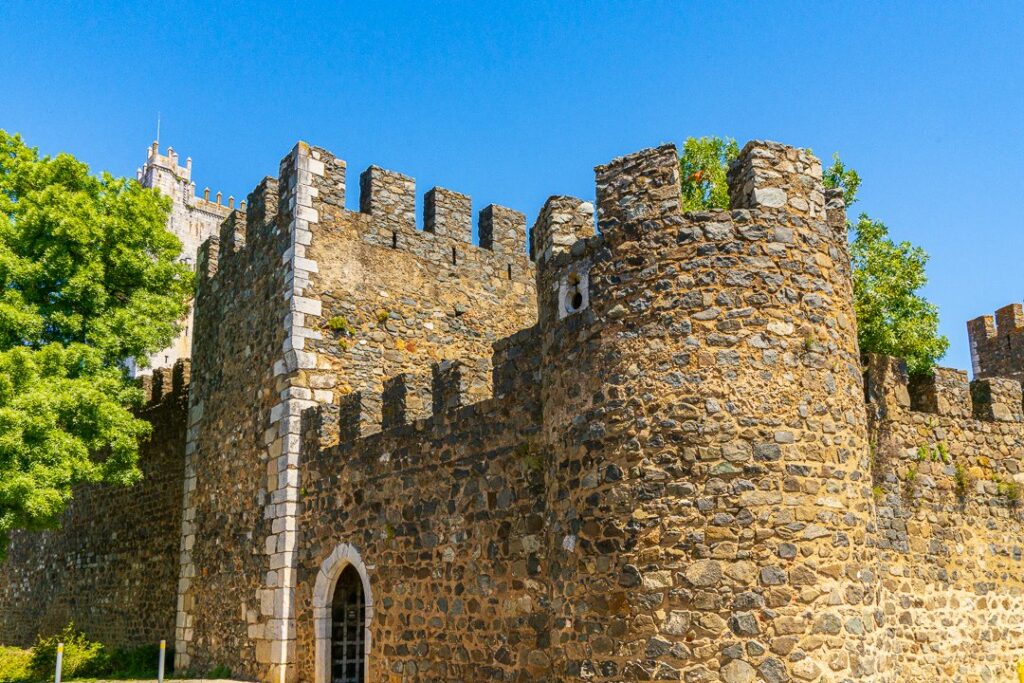
The Castle, boasting a quadrangular layout, exhibits distinctive features, including ten turrets attached to the exterior wall and a central tower within the interior wall, reinforcing the circulation gateway on the south side.
The south face showcases larger towers, contrasting with smaller turrets on the west. On the north side, towers with staggered basements hint at original roofing.
The east side boasts prominent towers, with the largest one positioned above the Main Gateway, known as the Torre Albarrã (Albarrana Tower). Historically, this multifunctional tower served as Torre do Haver (for goods), Torre do Tesouro (for treasure), and Torre do Tombo (an archive).
Today, it houses a room with a coffered vaulted ceiling featuring a periscope, providing a captivating 360º view of the city since its installation in 1999, making it a prominent attraction at the monument.
The Castle Barbican and Moat
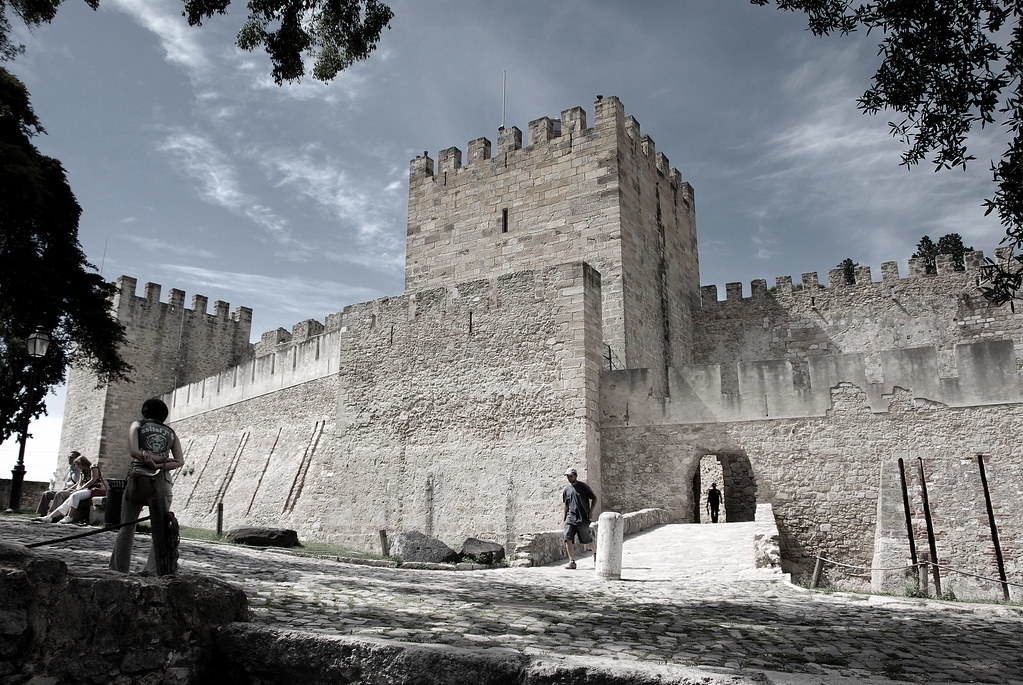
The strategic Barbican, situated in the southern and eastern sections of Castelo de S. Jorge, likely dates back to the 13th century. Originating from Almohad’s design, these defensive structures were introduced to the Iberian Peninsula during that era.
The Barbican was a crucial addition, as lower walls were strategically placed in vulnerable areas, such as gateways, or where natural defenses were lacking.
The Castelo de S. Jorge’s Barbican, with its reinforced base and complementing moat, stood sentinel next to the main access gateways, acting as the initial impediment for potential invaders.
The Advanced Lisbon Quiz
You’re now at the advanced Lisbon quiz with more difficult questions. No one gets every question right, so don’t beat yourself up on it. Good luck.
Wrap-Up: Castle of Sao Jorge a Popular Attraction
Exploring Castelo Sao Jorge in the Alfama district promises a captivating journey through Lisbon’s rich history. You can unravel the mysteries of the Archaeological Centre within its ancient walls, discovering evidence from the 7th century B.C. to the Moorish era and beyond.
The museum showcases cultural treasures, emphasizing the Moorish period’s influence on Lisbon’s evolution. Guided tours offer insights into the Castle’s architectural marvels, while the Camera Obscura provides a real-time 360º view of the city.
This historical landmark invites you to wander through time, offering a blend of archaeological wonders, cultural artifacts, and breathtaking panoramic views, making it a must-visit destination for those seeking a deeper understanding of Lisbon’s past.
The best part is you can make it part of your day trip to explore the castle complex and the Alfama tourist attractions. Just make sure to wear comfortable shoes.

